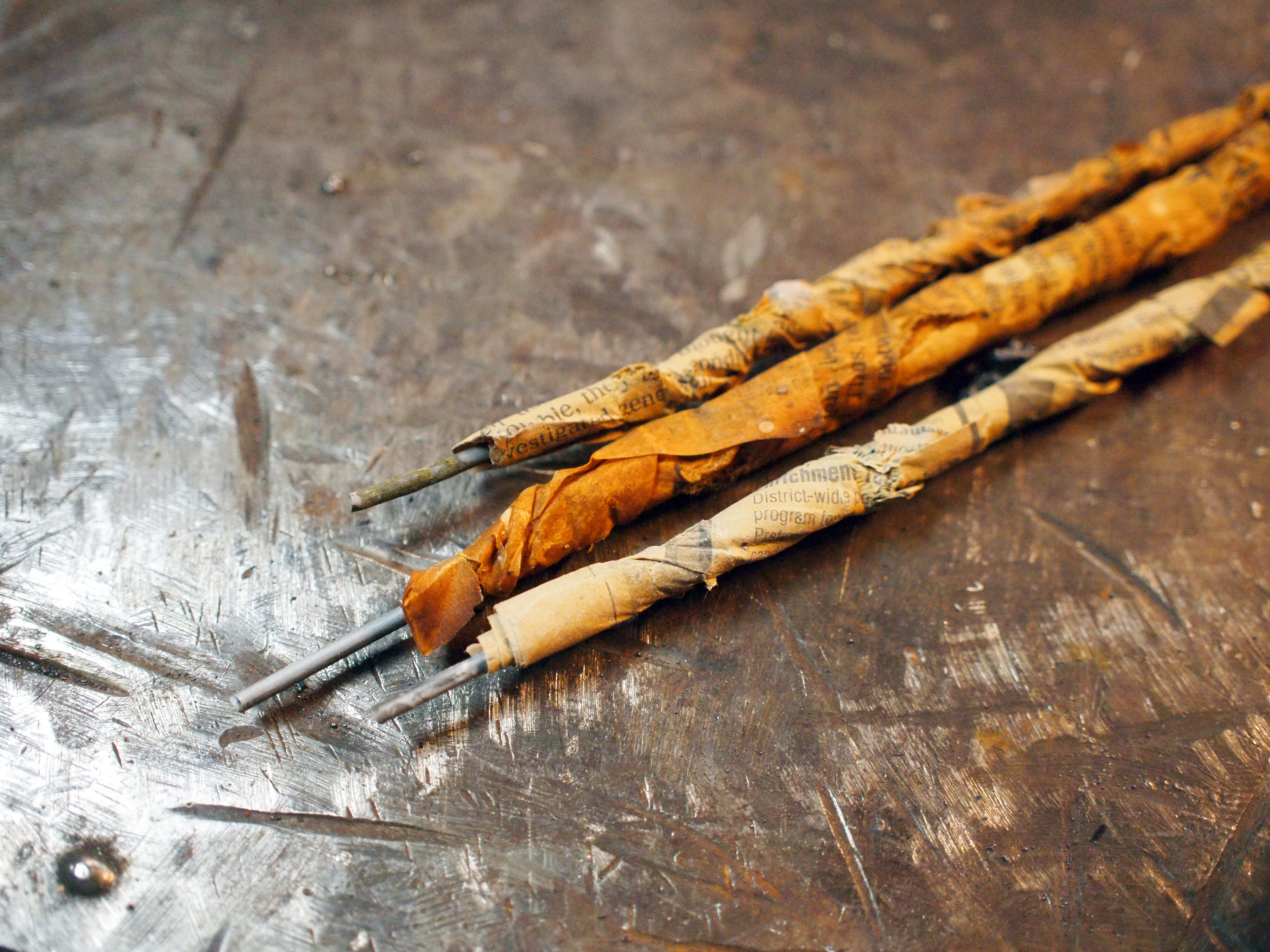There are a bunch of DIY welder articles and how-tos out in the maker ether, ranging from the super-simple, dumb, and brutally effective (three car batteries, wired in series) to the high-tech and fancy (TIG machines from microwave bits, oxy-hydrogen torches from split water and plumbing supplies). With all of the information out there, it is safe to say that experienced makers will be expertly fusing metal even if an oddly specific, exceptionally brutal catastrophe were to strike the welding industry. If civilization and supply chains collapse the anti-zombie fences will still get built, and the Thunderdome will be sturdy and made from steel.
However, all of the DIY welders I have seen assume you have access to welding rod. For the less weld-informed (see what I did there?) a good, solid weld involves more than melting and fusing metals — the weld zone needs to be free of oxygen, otherwise the normal oxidation of metals that leads to rust, patinas, and discoloration happens at a dizzyingly rapid rate, accelerated, as are many chemical reactions, by the high heat. This is not just an aesthetic issue — the oxidation happens inside the weld, so instead of a solid metal bond you get a brittle foam filling. Removing the oxygen is usually achieved by flooding the weld area with inert gas — regulated, pressurized gas from a separate tank in the case of MIG and TIG welding, gas created from vaporizing flux in oxy-fuel, stick and flux-core welding. The standard, coated arc-welding rod is the common currency of welding, used to hold the world together. They are ubiquitous. You can get them everywhere. Until you can’t.
Even the finest DIY welder is useless without welding rod. I did a bunch of research, Google-ing and drilling down through increasingly sketchy forums, ranging from the mainstream DIY to the super-sketchy survivalist fringe. Tons of interesting information on every imaginable topic, but, as far as I can tell, it seems like no one has ever made their own welding rod and documented it online. A minor, but potentially crucial gap in the DIY world, solved here.
My first step, as is often the case, was to look up patents. Patents lay out the crucial core of a technology, the bits that make that particular invention unique, new, patentable. Often, the process involved in the making of the thing is laid out as well, protecting the inventor’s rights to the means, as well as the ends. This keeps patent attorneys employed, and provides a nice step-by-step for MAKE writers to rip off.
After a little searching I dug up the patent “Electrode for Arc Welding,” filed by Reuben Stanley Smith, a resident of Milwaukee, Wisconsin in 1918. (Mr. Smith was a prolific inventor, churning out 45 patents for pumps, manufacturing processes, and welding equipment. Some more info on him can be found here.)
Basically, a steel rod is wrapped in cellulose (paper) soaked in sodium silicate. The wrapping is crimped to maintain close contact with the rod. The electrodes are then dried out (I used a toaster oven — a rod oven, or some time in the sun should do the trick as well.)
The rod is the electrode and filler, the paper/sodium-silicate wrapper spews out shielding gas upon combustion, and provides a path of plasma to guide the arc. The rod does not deposit a protective ceramic slag like modern welding rods, but, as Mr. Smith states in the patent, “I have found, also, that the coating of slag produced by the use of known covered electrodes is not essential to the production of eminently satisfactory work.” I tweaked the patent procedure a little to use commonly available materials, stuff one would reasonably find around the house.


